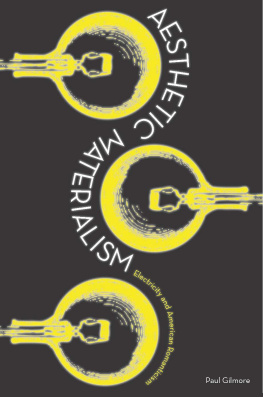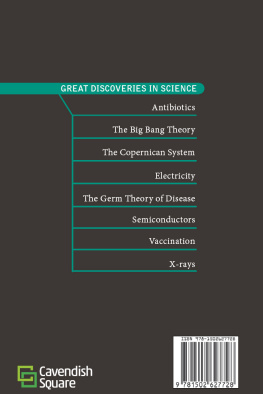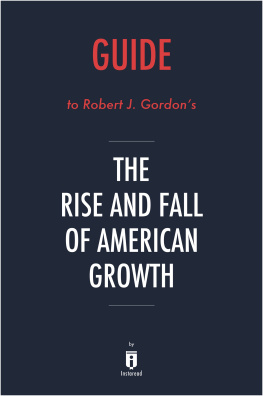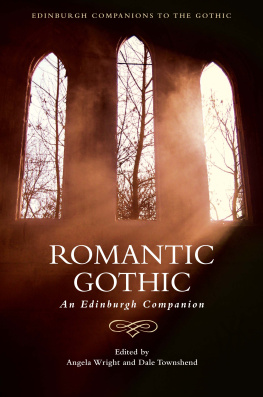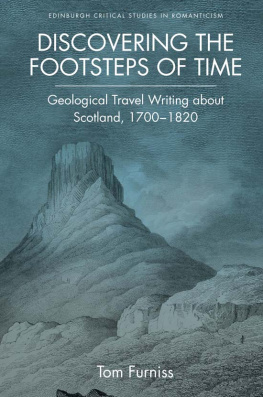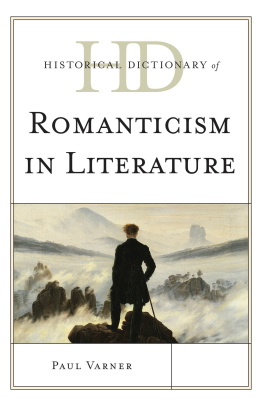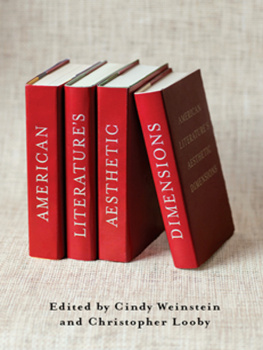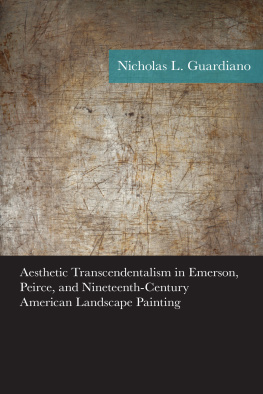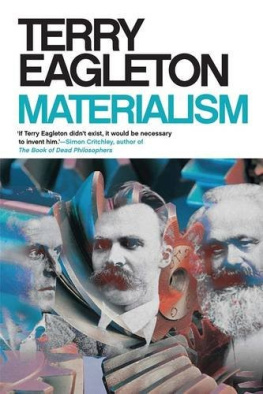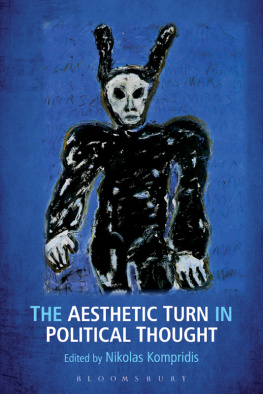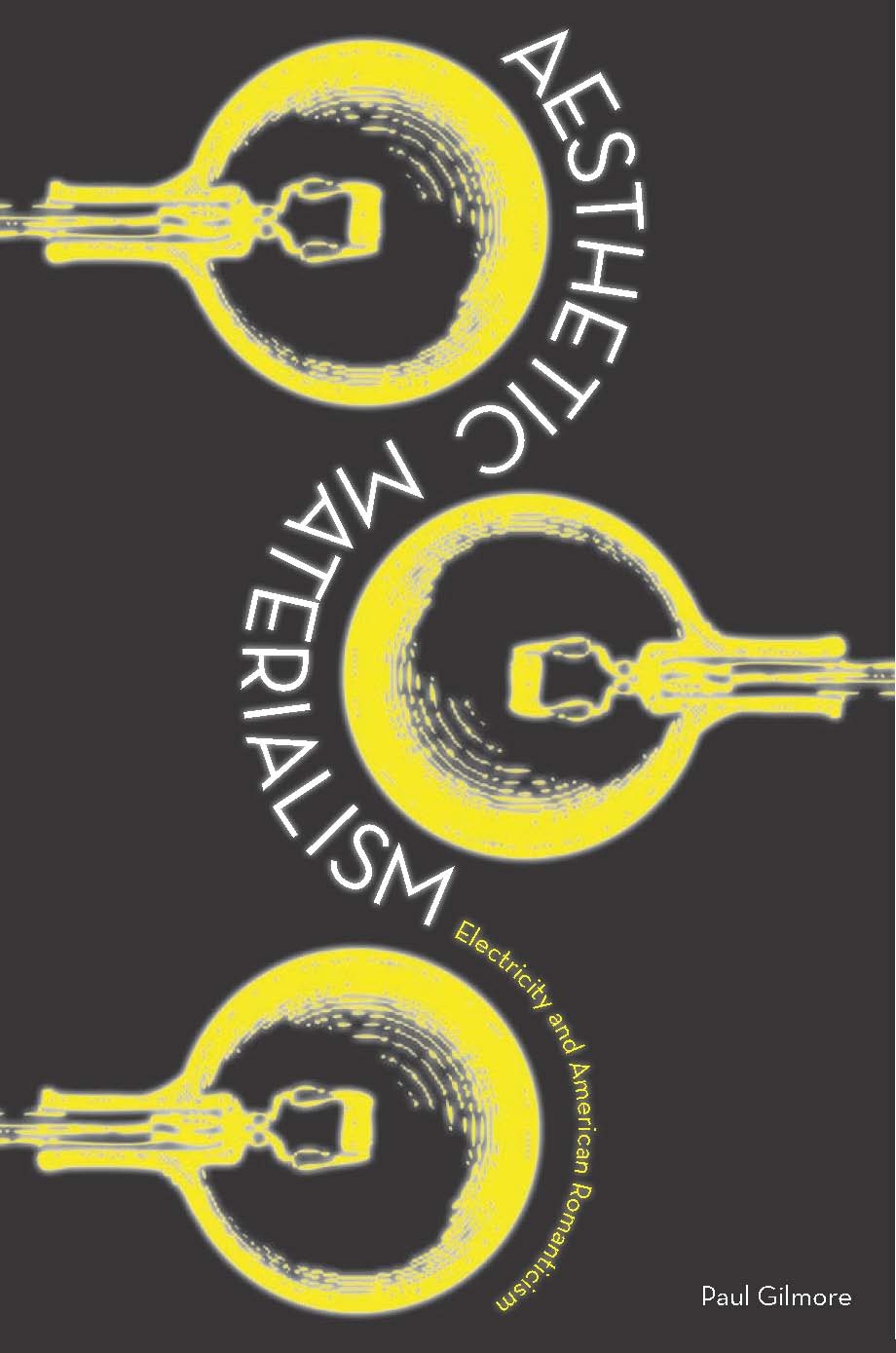Acknowledgments
This book completes a long process that began as I finished my dissertation at the University of Chicago. Along the way, bits and pieces of the final project appeared in The Telegraph in Black and White, ELH 69 (2002) and Romantic Electricity, or The Materiality of Aesthetics, American Literature 76 (2004). A significantly shorter and different version of Chapter 3 was originally published as Aesthetic Power: Electric Words and the Example of Frederick Douglass, in ATQ , Volume 16, No. 4, December 2002. Reprinted by permission of The University of Rhode Island.
The project developed most quickly and fully during the 20012002 academic year, thanks to a Barbara Thom Postdoctoral Fellowship at the Huntington Library, San Marino, California. Their extensive holdings and the collaborative environment the library fostered helped to direct and give final shape to this project. My thanks go to Roy Ritchie, W. M. Keck Foundation Director of Research, and the entire staff of the library for their help and support. In the years since then, during my time at California State University, Long Beach, I have been fortunate to have additional time for research through course reductions supported by awards from the Scholarly and Creative Activity Committee. My chair, Eileen Klink, and my students and my colleagues, especially Tim Caron and George Hart, have made Long Beach a great place to teach, to learn, and to grow. I have been equally fortunate to have participated in the Southern California Americanist Group (SCAG) since I came to the Los Angeles area. Founded by Michael Szalay, and carried on under the leadership of Jennifer Fleissner and Cathy Jurca, the group has continued to provide a wonderful framework for discussion and interaction, fellowship and goodwill. During the last few years my work has grown by coordinating this group with Greg Jackson, Eric Hayot, and Sharon Oster. Ive learned an incredible amount from all participants, especially the most regular regulars, Mark McGurl, Elisa Tamarkin, Mark Goble, and Sianne Ngai.
As this project neared completion, SCAG and the Huntington Library further enabled me to hone my thinking by giving Greg Jackson and me the chance to organize a conference on Historical Formalism, or Aesthetics in American Literary History. Again, Id like to thank Roy Ritchie and the staff at the Huntington, especially Carolyn Powell and Susi Krasnoo, for all their help and support. The scholars who participated, through their papers, their questions and comments, and their conversation, helped me to conceive the broader context for this work: Nancy Bentley, Bill Brown, Russ Castronovo, James Dawes, Elizabeth Maddock Dillon, Wai Chee Dimock, Rob Kaufman, Dana Nelson, Sam Otter, Nancy Ruttenburg, and Eric Sundquist. I couldnt have asked for a better collaborator than Greg Jackson. His friendship, good humor, and knowledge about just about everything have provided a real boost to this project for a number of years. I can always count on him to supply the right balance of critique and support.
At Stanford University Press, Emily-Jane Cohen has been a patient, supportive, and careful editor in guiding this work towards its completion. The comments of the readersRuss Castronovo, David Nye, and Laura Rigalpushed me to refine my arguments in very different and constructive ways. Earlier in the process, Wai Chee Dimock, Marc Redfield, and Laura Otis graciously agreed to read sections of the book, providing some key guidance, questions, and suggestions.
Ive dedicated this book to my two daughters, Charlotte and Rowan. Their joy for life, their complexity, their curiosity, their ability to grow and learn have energized, inspired, and, at times, fruitfully frustrated my work on this project. Their presence in my life constantly reorients me, providing me with needed perspective.
Finally, I met Reid Cottingham only a few months after I first presented on some of these materials at the MLA convention. As much as this project has changed since I first began, I have changed even more, due to her love, care, and devotion. My shift in thinking about these materials mirrors a greater transformation in my own life. I cant imagine this book or my life without her.
Conclusion: Aesthetic Electricity Caged
Within a few years of Whitman adding the opening line I Sing the Body Electric to his famous poem, the material conditions of the telegraphic industry, one of the foundations for his aesthetics of embodied universalism, had drastically changed. In 1866, after merging with its main rivals, Western Union essentially gained monopolistic control over the telegraph industry in the United States. Beginning in 1869, through a series of telegraph acts passed by Parliament, the postal service in Britain took over private telegraph lines, creating a government monopoly. These consolidations in the Anglo-American world followed the creation of the International Telegraph Union (which continues as the International Telecommunications Union) in Paris, in May, 1865. Signed by twenty European states, this first international telegraph convention sought to integrate telegraphic systems across international borders by standardizing codes and rates. Part of that integration was made possible by the increasing dominance of the Morse system. Where Western Union originally used the technology of Royal E. House, by the end of the 1860s, the Morse system, including the standardized code, was all but universal. These developments accompanied changes in the workplace. If the telegraph industry, as many have noted, was the first modern monopoly, it was also one of the first industries to enforce strict labor practices to control and break the organizing of labor. As corporate leaders like James D. Reid saw it, in the postbellum years, The telegraph service demands a rigorous discipline to which its earlier administration was unused. Its workers needed to display the precision and uniformity of mechanism. Although women had worked in the telegraph industry from the outset, upper management began to bring more and more women into the work force, largely because of their perceived docility and their significantly lower wages. The downward pressure of wages and the increased regimentation of the profession spurred the growth of the telegraphic workers union in the late 1860s and were the main issues leading to two major strikes, in 1870 and 1883. Where different technological apparatuses and competing telegraphic companies jarred against one another, rendering the telegraph an unstable, fluid medium in its early decades, by 1870 or so, across the Anglo-American world and Europe, the telegraph was quickly assuming the centralized, industrialized form it was to hold into the twentieth century.
Henry Jamess In the Cage (1898), probably the most famous telegraphic story in the Anglo-American canon, reflects these economic, technological, and social changes. Doing so, it presents an extended consideration of the limits of an electric/telegraphic aesthetics. As an impressive array of critics have described, Jamess novella interestingly speaks to the development of information systems, to the relationship between technology and realism, to the relationship between telegraphy and understandings of the nervous system, to the connections among sexuality, queer subject positions, and the regimes of modernity, and to the bureaucratization of women as mediators of exchange. By returning to the socioeconomic bases of this shift in metaphoric uses of electricity and telegraphy and by placing it within the broader literary history, I wish both to historicize the foreclosure of some of the aesthetic possibilities of an earlier moment and to illuminate the way that even with that foreclosure the potential for aesthetic connection, through new figures and forms, remains.

